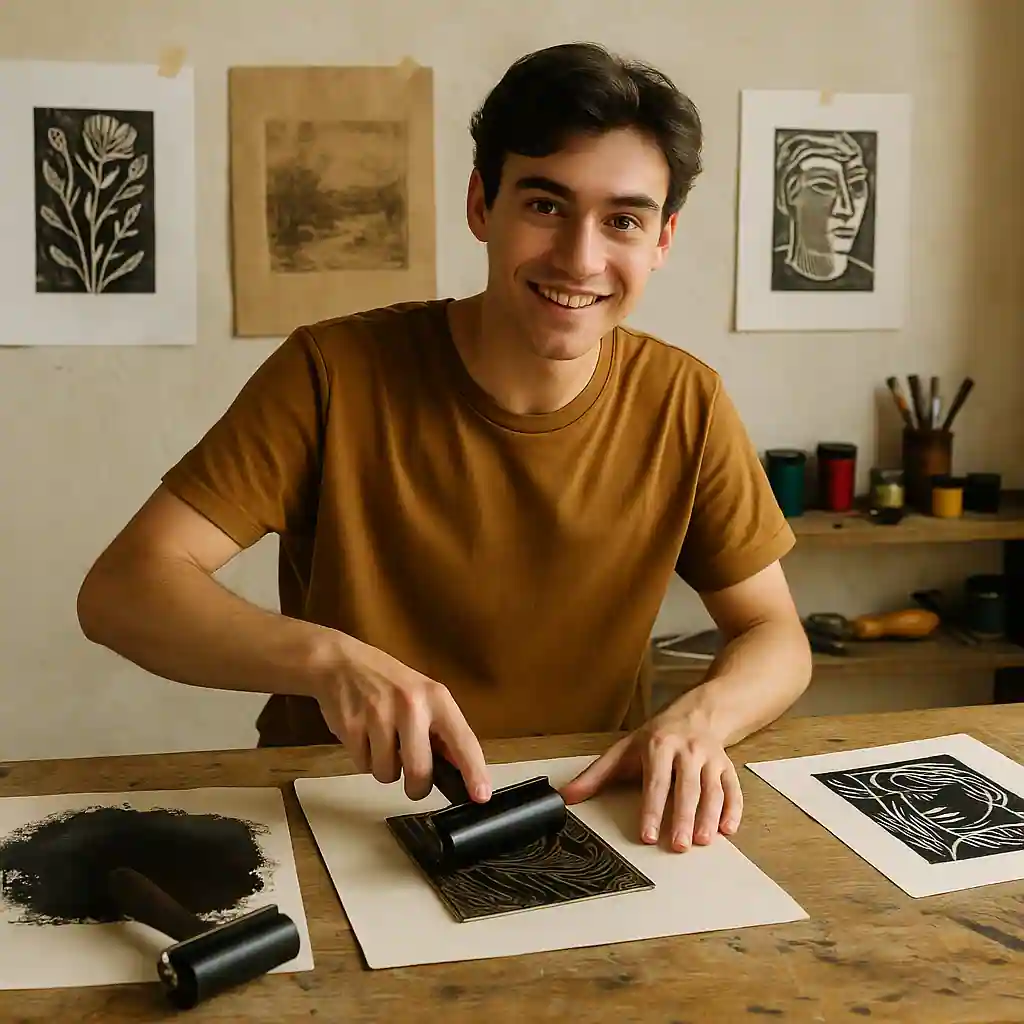Printmaking is one of the most exciting and versatile art forms in the world. From ancient woodcuts to modern digital methods, it blends tradition with innovation, giving artists endless possibilities to express themselves.
In this guide, we’ll explore what printmaking is, the techniques, its history, the materials needed, and creative printmaking ideas to inspire your next project.
What Is Printmaking?
Printmaking is an artistic process that involves transferring an image from a matrix or plate (like wood, metal, or linoleum) onto another surface, typically paper or fabric.
The result is a print — and artists can create multiple copies of the same design with consistency and precision. Each copy is considered an original work of art, not a reproduction.
Printmaking History: A Brief Overview
Printmaking dates back to around 500 CE in China, where woodblock printing was first used. It later spread to Japan and Europe, evolving through the Renaissance, where artists like Albrecht Dürer made significant contributions.
Over the centuries, artists have explored this medium to make political statements, religious illustrations, and fine art. The 20th century saw a boom in modern printmaking, with artists like Andy Warhol using it in pop art.
4 Types of Printmaking Every Artist Should Know
There are four major types of printmaking, each with unique tools and techniques:
1. Relief Printmaking
In this method, the artist carves away parts of a surface, usually wood or linoleum, and inks the raised areas. Common types include woodcut and linocut.
2. Intaglio
Artists incise or etch into a metal plate; the ink settles into the grooves. Techniques include etching, engraving, drypoint, and aquatint.
3. Lithography
Based on the principle that oil and water don’t mix, artists draw on limestone or metal with a greasy medium, then use water and ink to print the image.
4. Screen Printing (Serigraphy)
A stencil-based process where ink is pushed through a mesh screen onto the printing surface. Widely used in commercial and fine art applications.
Relief Printmaking: A Timeless Technique
Among all printmaking types, relief printmaking remains one of the most popular due to its accessibility and bold aesthetic.
- Tools Needed: Linoleum or wood blocks, carving tools, ink rollers (brayers), and printing paper.
- Style: High-contrast and textural, often used in posters, cards, and fine art prints.
Tip: Beginners can start with soft linoleum blocks and simple carving sets to get comfortable with the technique.
Printmaking Techniques to Explore
There are countless printmaking techniques, but here are a few favorites:
- Monoprinting – One-of-a-kind prints created by manipulating ink on a smooth surface.
- Collagraph – A textured collage plate is inked and printed.
- Gelli Plate Printing – Uses a gelatin-based plate for experimental, layered prints.
- Stencil Printing – Cut-out designs are used to control ink placement.
Each method offers different results, allowing for creative exploration and stylistic development.
Printmaking Process: Step-by-Step
Here’s a general outline of how the printmaking process works:
- Design Your Artwork – Sketch your idea and adapt it for reversal (especially for relief and intaglio).
- Prepare the Plate – Carve, etch, or draw your design onto the chosen surface.
- Apply Ink – Roll or press ink onto the printing surface.
- Transfer the Image – Use a press or hand pressure to transfer the image onto paper or fabric.
- Repeat or Adjust – Create additional prints or refine your technique.
Printmaking Materials You’ll Need
A basic printmaking kit includes:
- Carving tools (for relief)
- Inking rollers (brayers)
- Ink (water-based or oil-based)
- Printing blocks or plates (linoleum, wood, metal, etc.)
- Printmaking paper
- Baren or printing press
Affiliate Product Suggestions:
Here are a few high-quality tools to kickstart your printmaking journey (affiliate links):
- Block Printing Starter Kit – Ideal for Beginners
- Printmaking Paper
- Books – Printmaking , THE PRINTMAKING IDEAS BOOK
Famous Printmaking Art & Artists
Some iconic examples of printmaking include:
- Albrecht Dürer’s woodcuts – Renaissance masterpieces.
- Katsushika Hokusai’s “The Great Wave off Kanagawa” – A famous Japanese ukiyo-e print.
- Andy Warhol’s Marilyn Monroe series – Screen printed pop art classics.
- Pablo Picasso’s linocuts and etchings – Powerful explorations in form and symbolism.
These artists used printmaking not just for duplication, but to define new visual languages.
Importance of Printmaking in Art and Culture
Printmaking has played a pivotal role in:
- Spreading information (e.g., early religious texts and illustrations)
- Political expression (e.g., protest prints)
- Making art accessible (through affordable editions)
- Inspiring innovation in technique and style
It remains a vital medium for both emerging and professional artists.
Creative Printmaking Ideas to Try
Looking for fresh printmaking project ideas? Try these:
- Create greeting cards with linocut designs
- Print fabric patches with your own block prints
- Use leaves or natural objects for textured monoprints
- Combine watercolor with printed linework for mixed media art
- Design your own pattern for wall art using repeated prints
Final Thoughts
Printmaking is a beautiful mix of craftsmanship and creativity. Whether you’re drawn to the bold lines of relief printing or the experimental nature of monoprints, this art form offers endless room for growth and exploration.
Ready to dive in? Grab a starter kit, find your favorite technique, and start printing your artistic voice into the world!
